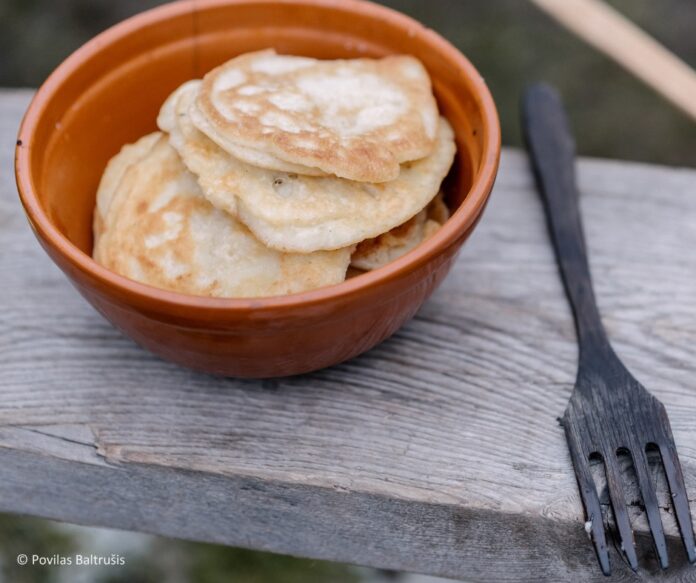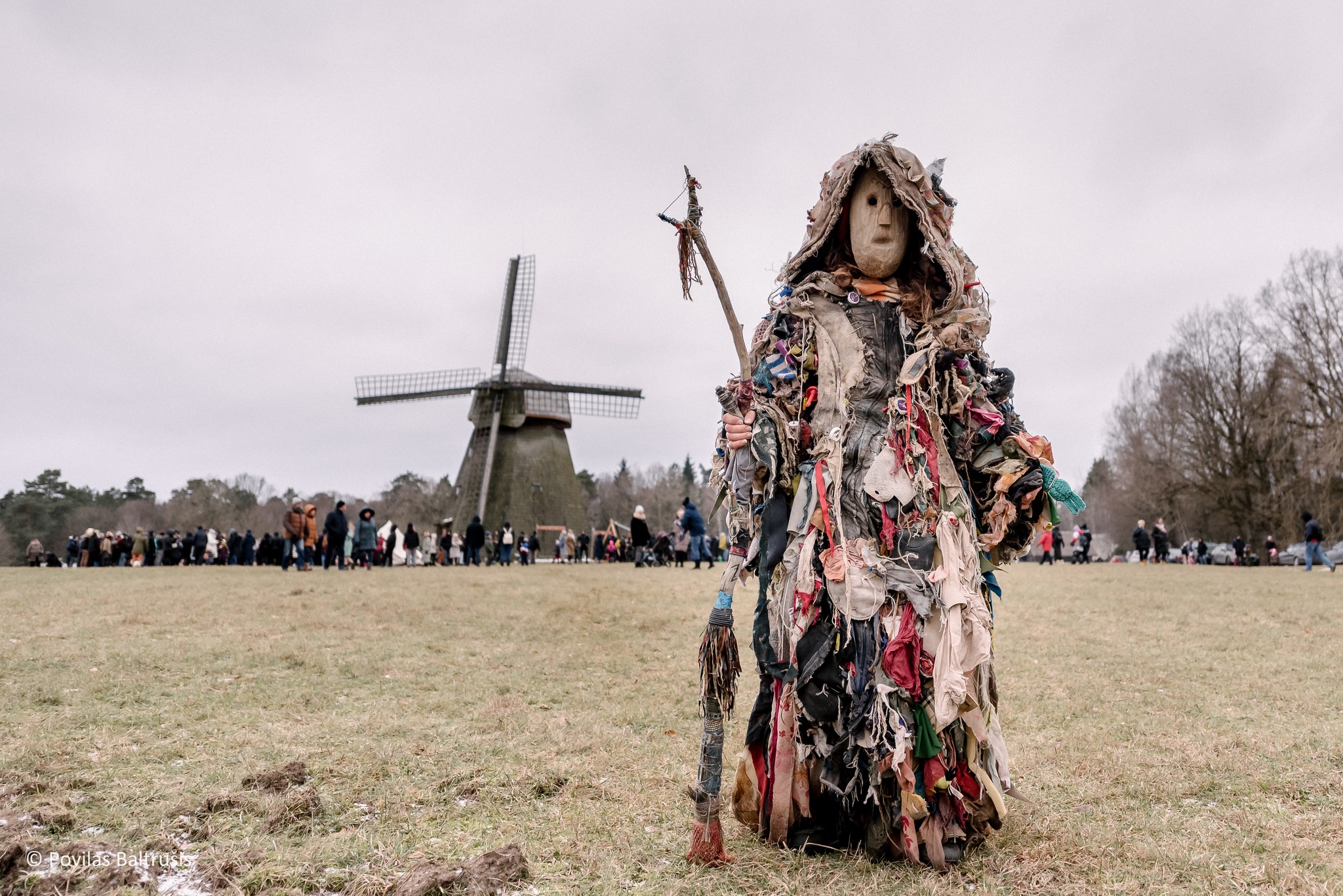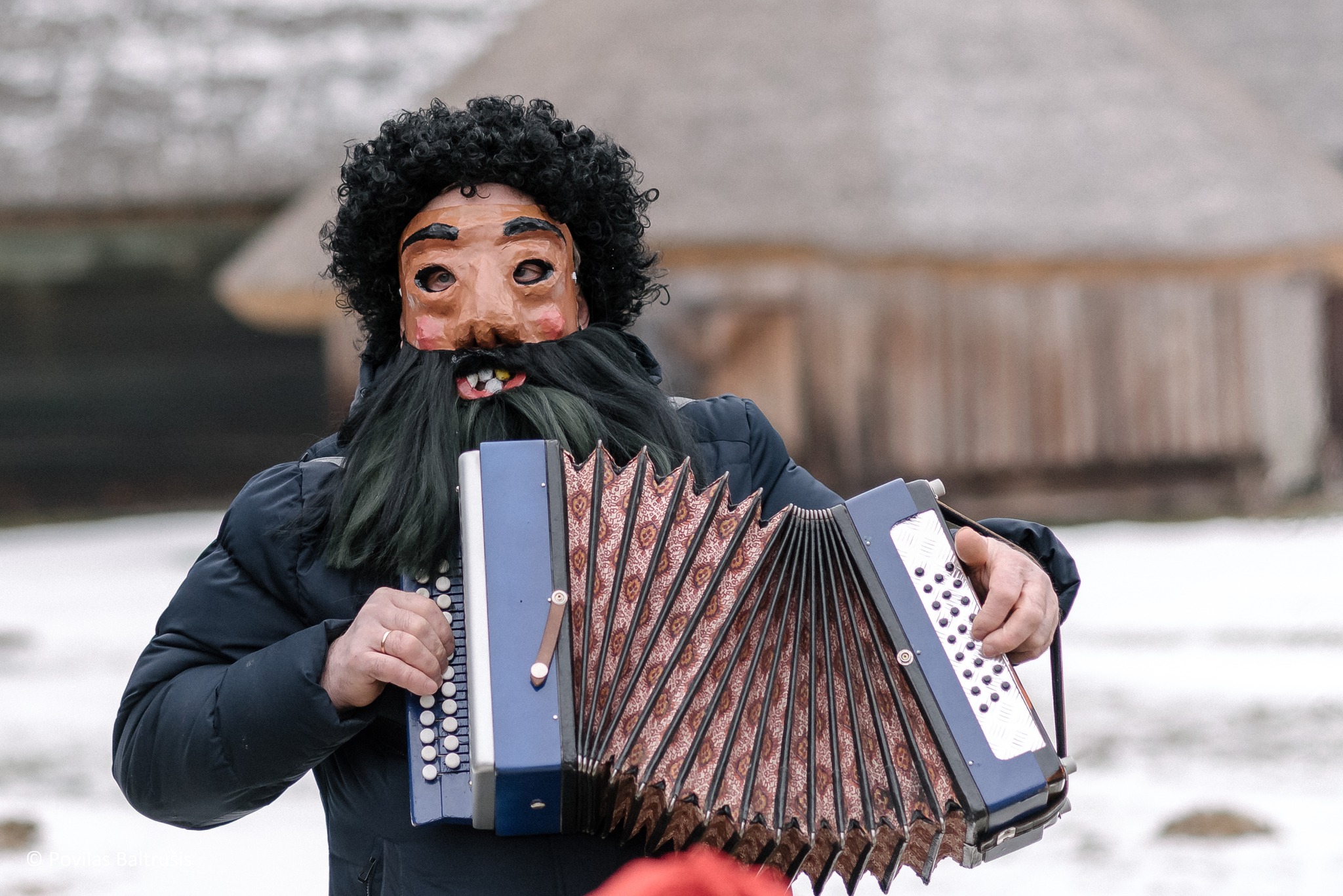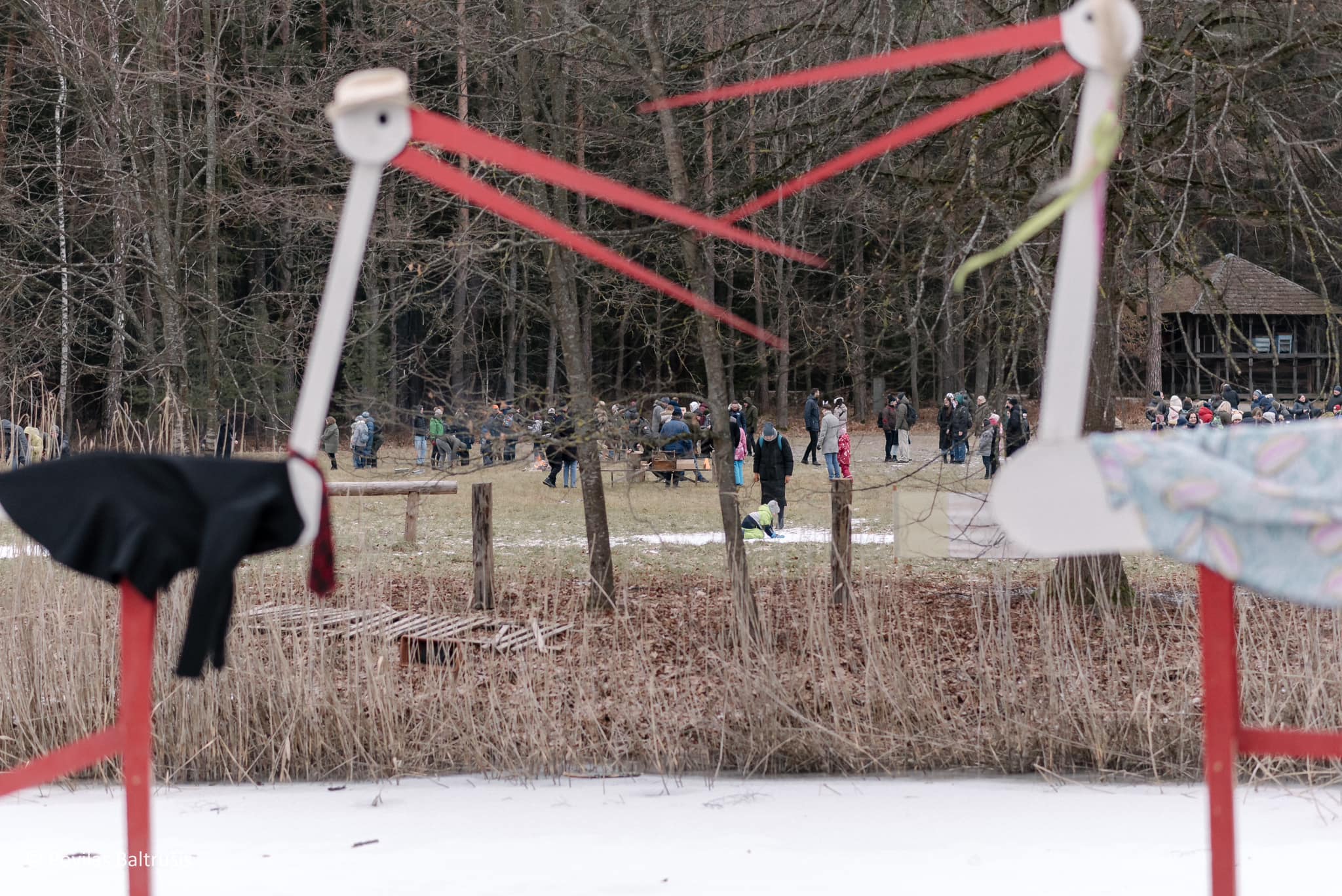
The eve of Ash Wednesday, signalling the beginning of the 40 days of Lent and preparation for Easter, is called Shrove Tuesday or Pancake Tuesday. Užgavėnės – the Lithuanian Mardi Gras and Donut Festival (Spurgų Festivalis) also marks the retreat of winter. In Vilnius and other cities and towns in Lithuania, it is a loud and joyful celebration that includes various traditional jokes and games.
 On this day, pancakes and meats are eaten ahead of Lenten fasting and to ensure health and strength for the whole year. This year in Vilnius, the culinary heritage including sugary yeast pancakes is expanded with a new tradition, donuts, to which a first-time-ever festival will be dedicated during the same time.
On this day, pancakes and meats are eaten ahead of Lenten fasting and to ensure health and strength for the whole year. This year in Vilnius, the culinary heritage including sugary yeast pancakes is expanded with a new tradition, donuts, to which a first-time-ever festival will be dedicated during the same time.
The Donut Festival is taking place between February 1-14 in Vilnius Old Town. The community of the Stiklio quarter brings a new twist on the traditional Užgavėnės cuisine: the Festival features all kinds of international Mardi Gras treats, from Spanish churros to bagels and pancakes with caviar.
The word Užgavėnės comes from the name of the Lenten season, “Gavėnia”, a time of fasting. “Užgavėnės” is a day to eat plentifully before the traditional fast, which used to be very strict (no meat for seven weeks, and only one full meal a day). A holdover from pre-Christian times were the traditions of soothsaying and predictions, rituals to ensure good crops and a plentiful harvest.
 An integral part of the Shrove Tuesday festivities were costumed and masked revelers, who were meant to scare away winter and speed the arrival of spring. Masks were homemade, created from ordinary material found locally – tree bark, fur, flax fibres, twine. People dressed to represent horses, goats, cranes, devils or death. Costumes were not the splendid displays of Mardi Gras, but old hats and tattered coats. Cross-dressing was also practiced, to fool local demons. The effigy of a sloppy woman, called Kotrė, Morė or Čiučela was included in the carnival parade, and burned in a bonfire or drowned at the end of the evening. Two other characters – Lašininis (bacon-man) and Kanapinis (hemp-man) are featured at the festivities. Decorated with sausages and grease, stout Lašininis represents the meat-eating season between Christmas and Lent. They stage a battle, and the thin, starved-looking Kanapinis, foreshadowing the lean weeks of Lent, must always win. He swings a hemp rope to chase revelers away by midnight, when all festivities end.
An integral part of the Shrove Tuesday festivities were costumed and masked revelers, who were meant to scare away winter and speed the arrival of spring. Masks were homemade, created from ordinary material found locally – tree bark, fur, flax fibres, twine. People dressed to represent horses, goats, cranes, devils or death. Costumes were not the splendid displays of Mardi Gras, but old hats and tattered coats. Cross-dressing was also practiced, to fool local demons. The effigy of a sloppy woman, called Kotrė, Morė or Čiučela was included in the carnival parade, and burned in a bonfire or drowned at the end of the evening. Two other characters – Lašininis (bacon-man) and Kanapinis (hemp-man) are featured at the festivities. Decorated with sausages and grease, stout Lašininis represents the meat-eating season between Christmas and Lent. They stage a battle, and the thin, starved-looking Kanapinis, foreshadowing the lean weeks of Lent, must always win. He swings a hemp rope to chase revelers away by midnight, when all festivities end.
 Some of the traditional Shrove Tuesday dishes are šiupinys, a stew of various legumes and potatoes together with pigs’ feet, tails, ears or entire heads. The tail was particularly meaningful – the one who finds it in his or her bowl will be the first to marry. Other regional dishes were kiunkė (or šutynė), a stew of meat and potatoes, šaltiena – meat in aspic, or lamb soup with dumplings. Pancakes and donuts were enjoyed everywhere.
Some of the traditional Shrove Tuesday dishes are šiupinys, a stew of various legumes and potatoes together with pigs’ feet, tails, ears or entire heads. The tail was particularly meaningful – the one who finds it in his or her bowl will be the first to marry. Other regional dishes were kiunkė (or šutynė), a stew of meat and potatoes, šaltiena – meat in aspic, or lamb soup with dumplings. Pancakes and donuts were enjoyed everywhere.
An interesting recipe for donuts with cottage cheese comes from Beata Nicholson, a famous TV chef in Lithuania today.
Ingredients:
600 g (21 oz) cottage cheese (not wet curds)
4-5 tablespoons sugar
3 eggs
1 tablespoon brandy or rum
Dash salt
200g (7 oz) or more flour
1 heaping teaspoon baking powder
1 litre vegetable oil
Icing sugar for sprinkling
Directions:
- Sift flour with baking powder and salt
- Mix cottage cheese with eggs, sugar and brandy or rum.
- Sift flour mixture into cottage cheese mixture and combine. The dough may become hard to handle. Using two spoons, shape the donuts by transferring the dough from one spoon to the other about four times.
- Immediately lower the donuts into hot oil. Once cooked, drain on paper towels.
NOTES: If the dough is too loose, add flour. The donuts should be small, otherwise the centres will be undercooked. Donuts may collapse if the oil is too hot.





























